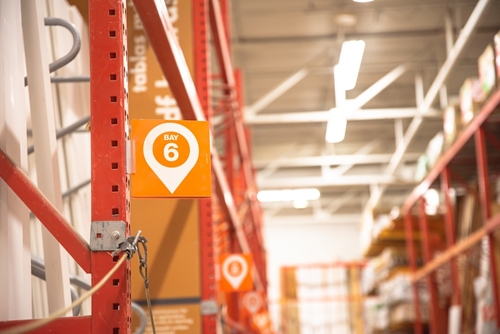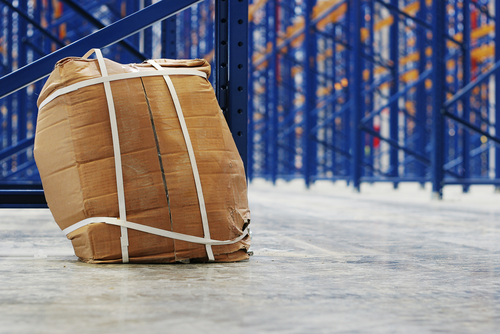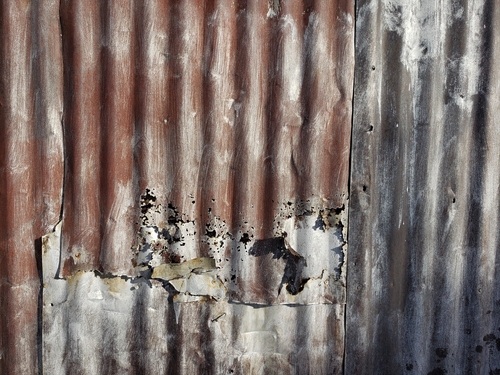Pest Control for Warehouses: 7 Areas to Target
If you operate a warehouse in New York, New Jersey or the surrounding area, chances are you’ve dealt with pests of one kind or another. Insects, rodents and other nuisances can damage property, infest equipment and create an unhealthy work environment. Unfortunately, warehouse pests often go unnoticed if you don’t know where to look. And, under the right conditions, they thrive unseen.
To help you identify the areas where pests commonly congregate, we’ve created a list of seven areas you’ll want to closely monitor. If you do identify potential pest problems, don’t hesitate to call in the experts. You don’t want to risk disruption to your daily operations or damage to the goods you’re storing.
Warehouse Pest Control Checklist
Warehouse pest control begins with prevention. Below are seven areas to inspect regularly so that your warehouse doesn’t become a breeding ground for bugs and rodents.
1. Rack Legs and Supports
Those racks and shelves that make up the majority of your storage infrastructure can be a sanctuary for pests. While they are designed to be light, easy to assemble and sturdy, they are not designed with pests or cleanliness in mind. The holes along the racks make a perfect hiding spot and are difficult to keep clean.
The addition of forklift guards and other accessories can compound the issue and make nooks difficult to reach. Racks and shelving make it easy for food, spills or pests to accumulate unnoticed. Beyond regular, dedicated inspection, plugging holes can deter pests from using racks and supports as their own private transitway.


2. Waste Management and Dumpster Areas
Pests like rats, mice and cockroaches are naturally attracted to garbage. Limiting their access to waste bins, spills and dumpsters is a key component of warehouse pest management.
A poorly maintained dumpster will attract insects, birds and rodents who may take the next step and find their way into your facility, especially in the colder seasons. Choose a dumpster that won’t leak liquids and has a strong compactor seal. Additionally, keep your dumpster and the surrounding area clean. Repair cracks in your dumpster pad to keep food and waste from contaminating the soil and flies from developing within. When you swap out dumpster boxes, make sure the replacement has been cleaned to prevent maggots and other larvae from transferring.
3. Balers
If you use balers to condense cardboard and other materials for recycling, you could be sitting on a pest infestation, literally. Food and other residues that build up during processing can collect inside and around your baler. Unfortunately, these machines can be difficult to clean. Check them frequently for signs of pests like beetles, mealworms, moths and other stored product pests. For help managing pests in difficult areas like this, call in a professional.


4. Specific Products and Damaged Inventory
Groceries, pet food, grain and even textiles will attract pests of all kinds. Be sure that you’re handling these items properly, and make sure that you aren’t bringing contaminated products into your warehouse. Be mindful of faulty packaging and expired items.
Accidents are inevitable and items that are dropped, crushed or broken are prime pest attractors. Food cans are especially noteworthy here. Clean up quickly and make sure that any damaged items are inspected and properly disposed of. The right protocols will reduce the likelihood of pest proliferation.
5. Employees Spaces
Break rooms, offices, commissaries and anywhere where humans gather could be a pest vector. Food waste, garbage and spills will attract pests, especially in downtime when people aren’t present. Nocturnal pests like mice are notorious scavengers when things are quiet.
Also, be aware of employees unwittingly bringing pests onto the premises. Insects like cockroaches and bed bugs are notorious hitchhikers that spread through travel. Keep areas like bathrooms and locker rooms clean to reduce pest traffic into them.
6. Areas Where Water is Present
Pests need moisture to survive. Keep areas like wash down bays and equipment like floor scrubbers clean and dry to prevent pests and mildew from proliferating. Maintain floors and walls so that they’re free of cracks where moisture can collect. Perform regular plumbing checks to identify leaks. After cleaning procedures, dry areas quickly with squeegees or towels.
Flies are a particular nuisance around drains and areas of moisture. Keep drains sanitary to prevent flies from laying eggs and the buildup of unhealthy organic material.
7. Corrugated Walls
Warehouses are often constructed from inexpensive but sturdy corrugated metal. While this material may seem like a viable choice, it is easily susceptible to rust and damage. Even small holes or dents become invitations for pests to enter.
If your facility is insulated, that insulating material could be covering up the entry points where pests gain access. It also provides an attractive nesting material for rats and mice. Make perimeter inspection part of your regular pest prevention program and close any gaps you discover.


Boost Your Warehouse Pest Control Program
Staying on top of pests is crucial when running a warehouse. Inspecting and maintaining these seven common warehouse pest points will reduce your chances of infestation.
Assured Environments has been providing expert pest control for warehouses and storage facilities for decades. We understand how pests get in, where they hide and how to get rid of them. Let our experienced staff take away the headache of warehouse pests in your facility with proven pest management strategies. Contact the Assured team today to request an inspection and consultation to keep your warehouse pest free.
